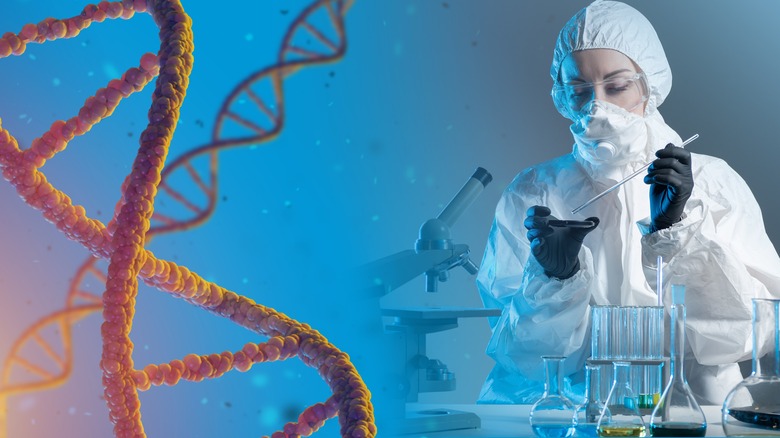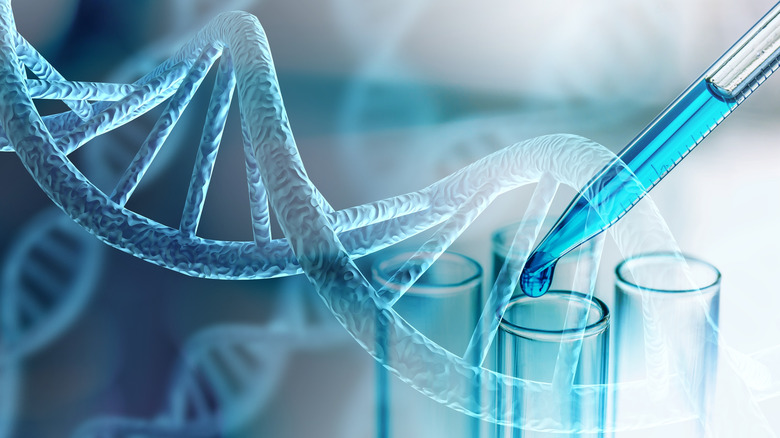How DNA Helped Identify A Missing Person From A 1971 Case
Luna DNA states that Fredrich Miescher first discovered deoxyribonucleic acid — more commonly known as DNA — in 1869. However, scientists at the time did not have a name for it or knowledge of its applications. In the 1940s and 1950s, scientists had a concept referred to as "genes." They knew that genes contained genetic information for hereditary traits, but did not know what it looked like, or how it moved from parents to offspring. James Watson and Francis Crick discovered the structure of DNA in 1953. They built upon Alexander Todd's research, which showed that phosphate and deoxyribose sugar groups made up the components of DNA. After building multiple models representing hydrogen bonds, Watson and Crick discovered that these components are structured in a double helix (per National Library of Medicine).
Since then, advancements in the world of DNA have allowed people to learn more about visible family traits and even find out if they carry genetic disorders that could be passed onto their children. Scientists have also since applied DNA knowledge to human identification.
A body was found in the woods of New Hampshire in 1971
Using DNA to identify humans is helpful in forensic investigations. If a sample of cells from a crime scene reveals a person's DNA, they can be proven innocent or guilty of crimes in question. DNA also helps scientists find missing people regardless of the state in which someone is discovered. In 1971, 26-year-old Katherine Ann "Kathy" Alston was supposed to meet family at Logan Airport in Boston, Massachusetts. She never arrived and was never seen again (per WMUR).
According to Oxygen, investigators found a woman's body in the woods of New Hampshire. They could not immediately tell how she died, but assumed homicide. Facial reconstructions did not help them identify her. The investigators then contacted the DNA Doe Project, a nonprofit that uses genetic genealogy. Alston's family had submitted her to a DNA database. Their submission matched the sample taken from the body, finally identifying the woman as Alston in January 2023.
The DNA Doe Project works on cases all over the United States
The DNA Doe Project has helped identify bodies all over the United States, even when presented with limited DNA samples. Genetic genealogists volunteer their time to work with the organization. They partner with cold case organizations and investigators for major tragedies such as the 1921 Tulsa Race Massacre. Their website features successful identifications as well as cases still under testing and investigation.
Despite the fact that Kathy Alston died in 1971, investigators are hoping to find people who knew her and eventually find out who killed her. She was recently divorced from Ralph Lawson Garrett, Jr. However, officials say that there is nothing "to suggest the divorce was not amicable." Investigators also hope to speak with Alston's former classmates and her roommate at the time of her disappearance. What adds further intrigue to the case is the fact that oddly enough, no one reported her as a missing person back in 1971 (per WMUR).


